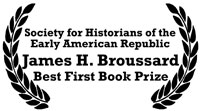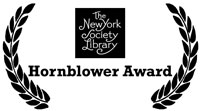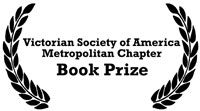TAMING MANHATTAN
With pigs roaming the streets and cows foraging in the Battery, antebellum Manhattan would have been unrecognizable to inhabitants of today’s sprawling metropolis. Fruits and vegetables came from small market gardens in the city, and manure piled high on streets and docks was gold to nearby farmers. But as Catherine McNeur reveals in this environmental history of Gotham, a battle to control the boundaries between city and country was already being waged, and the winners would take dramatic steps to outlaw New York’s wild side.
Between 1815 and 1865, as city blocks encroached on farmland and undeveloped space to accommodate an exploding population, prosperous New Yorkers and their poorer neighbors developed very different ideas about what the city environment should contain. With Manhattan’s image, health, and property values on their minds, the upper classes fought to eliminate urban agriculture and livestock, upgrade sanitation, build new neighborhoods, demolish shantytowns, create parks, and generally improve the sights and smells of city living. Poor New Yorkers, especially immigrants, resisted many of these changes, which threatened their way of life.
By the time the Civil War erupted, bourgeois reform appeared to be succeeding. City government promised to regulate what seemed most ungovernable about urban habitation: the scourge of epidemics and fires, unending filth, and deepening poverty. Yet in privileging the priorities of well-heeled New Yorkers, Manhattan was tamed at the cost of amplifying environmental and economic disparities, as the Draft Riots of 1863 would soon demonstrate.
“…a scholarly history that tells an odd story in lively prose. This book implicitly alludes to the urban revival now stretching from Portland, Ore., to Portland, Me., but whatever your thoughts on brewpubs and bike lanes, you probably haven’t read a municipal history that has a mayor “ready to tackle the hog problem”…[Taming Manhattan] is a smart book that engages in the old-fashioned business of trying to harvest lessons for the present from the past. Best of all, a quiet rage animates Ms. McNeur’s writing, a dismay at the inequalities of the past that, she clearly believes, have survived into the present.”
“In an era in which urbanites are trying to restore forms of petty agriculture within the metropolis, this work reminds the reader that the boundaries separating city life from agricultural life are complex. Taming Manhattan depicts a conflict-laden process whereby some urbanites sought to impose a more orderly nature to the disadvantage of others. McNeur has written a clever book that deserves to be read widely.”
“Taming Manhattan is a unique and insightful investigation of several key episodes in the environmental history of antebellum Manhattan that highlight ways New Yorkers sought to control physical space during a period of rapid urbanization and dramatic social change. ... Taming Manhattan breathes new life into our understanding of how New Yorkers of all social classes negotiated with municipal leaders to remodel and utilize the natural landscape on their own terms.”
“A real contribution to urban biography”
“Nearly two centuries before the Occupy Movement, New Yorkers rich and poor clashed over what shape their young city should take. In this superb history, McNeur recovers the bitter battles over feral hogs and untamed dogs, public parks, safe and pure food, effective sanitation, and the fate of the underclass. Making a safer and cleaner city for some, she concludes, also created a shadow city of poverty and filth for others. Taming Manhattan is a thrilling, vivid expedition into Gotham’s wild and often violent past.”
“In the decades before the Civil War, New York was rapidly becoming the largest and most important city in the western hemisphere. But mad dogs and wild pigs roamed its streets; garbage heaps, squatters, and shantytowns were commonplace; parks and public open spaces were practically non-existent; and epidemic disease was a constant threat. Catherine McNeur’s Taming Manhattan tells us how New York was literally cleaned up and transformed from a health hazard to an emerging world city. And she does it with beautiful prose, careful research, and persuasive argument. Altogether an excellent book.”
“Many of the underlying conflicts in McNeur’s riveting, meticulously researched account resonate strongly in the New York of today, where deepening economic inequality is fraying the ideal of a prosperous city that can be shared by all its residents: where the churning real estate market is constantly displacing the less wealthy; where rich neighborhoods get pristine parks and poor ones get cracked asphalt; where investment bankers live in lofty Manhattan glass towers and fast-food workers struggle to hang on to vermin-infested rooms on the fringes of the outer boroughs.”
“McNeur’s book offers a fresh approach to a city with a storied history. Her research was clearly rigorous, yet Taming Manhattan offers narratives and visual images that make it a delight to read.”
“Reading Taming Manhattan is like peering into a Petri dish at the massive changes now occurring on a planetary scale and wondering how it will all work out.”





